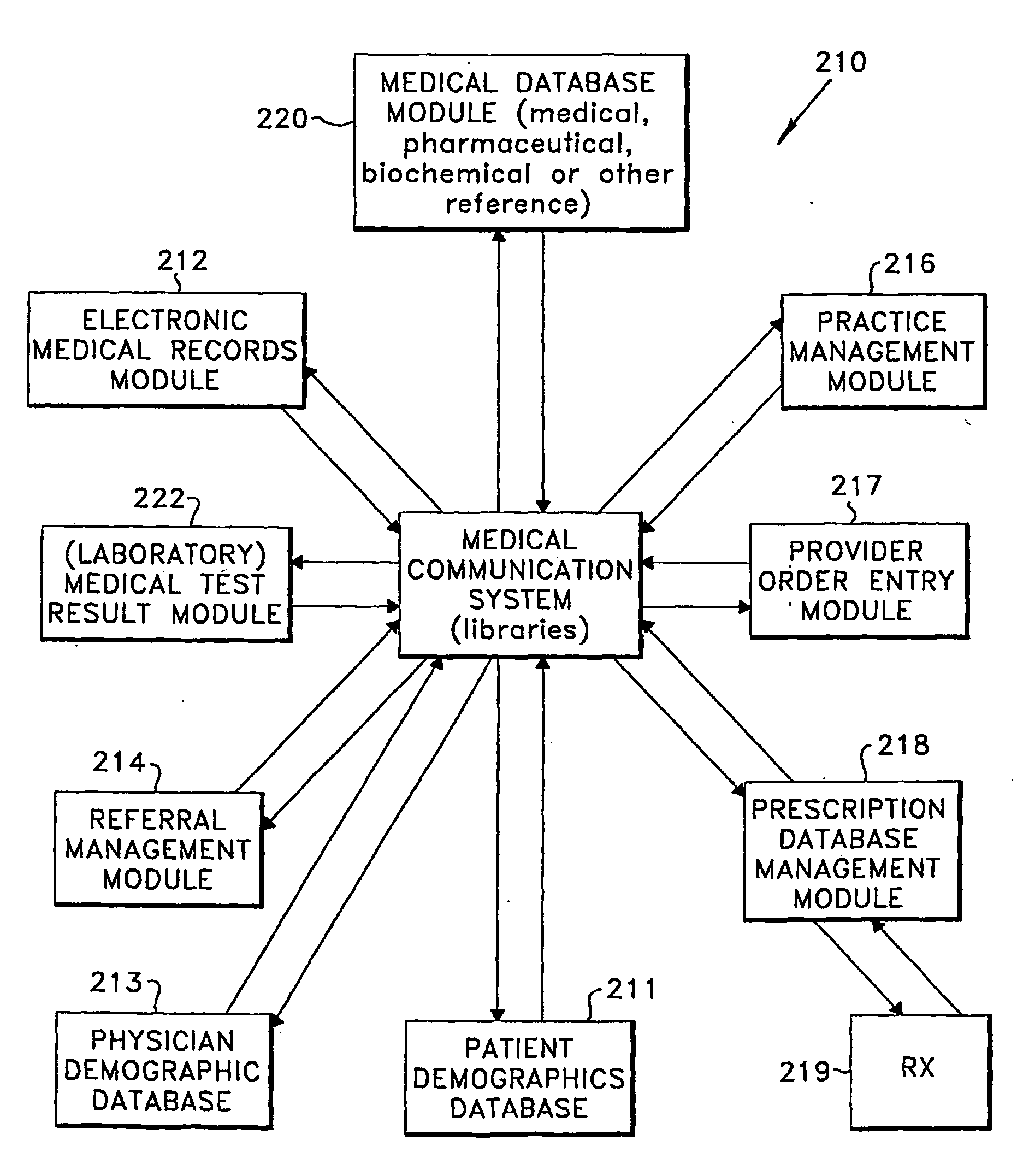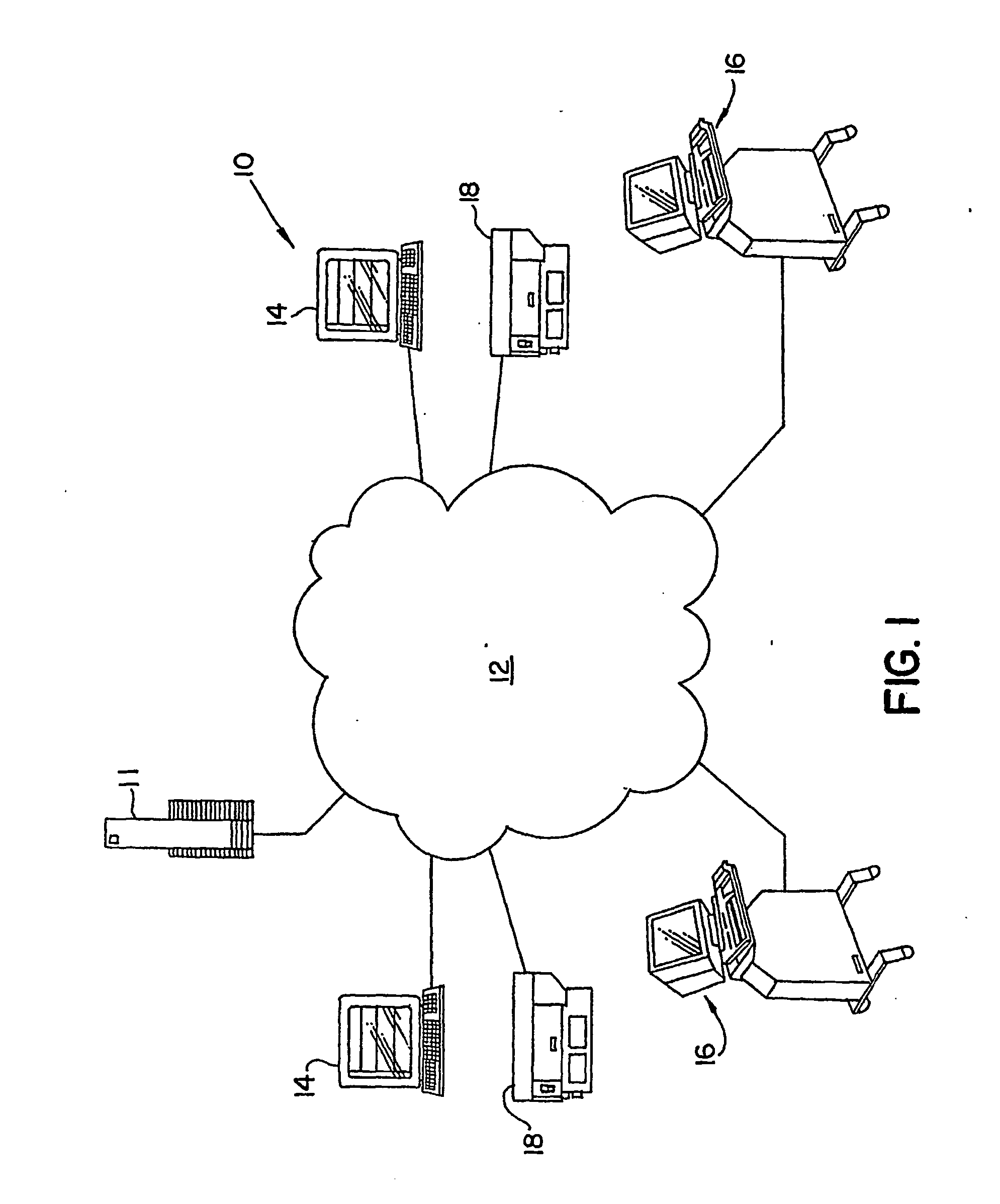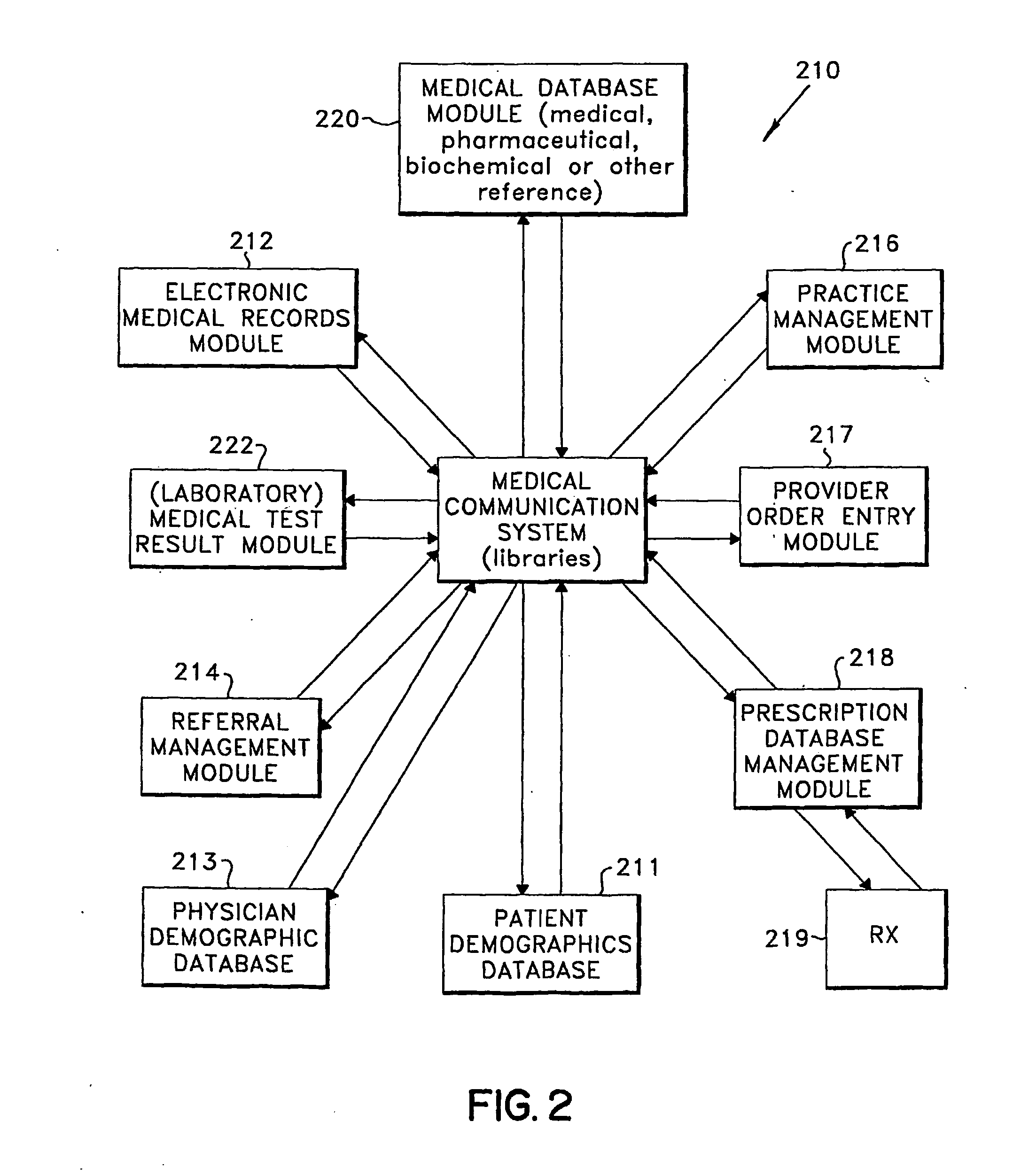Method and system for medical communications
- Summary
- Abstract
- Description
- Claims
- Application Information
AI Technical Summary
Benefits of technology
Problems solved by technology
Method used
Image
Examples
Embodiment Construction
[0027] Referring now to the various figures of the drawing, wherein like reference numerals refer to like parts, there is shown in FIG. 1 a block diagram of an environment 10 with medical computer system embodying and implementing the methodology of the present invention. The following discussion describes the structure of such an environment 10 but the discussion of the applications program and data modules that embody the methodology of the present invention is described elsewhere herein.
[0028] The environment 10 includes one or more servers 11 which communicate with a distributed computer network 12 via communication channels, whether wired or wireless, as is well known to those of ordinary skill in the pertinent art. For simplicity, one server 11 is shown. Server 11 hosts multiple Web sites and houses multiple databases necessary for the proper operation of the system of the subject invention.
[0029] The server 11 is any of a number of servers known to those skilled in the art ...
PUM
 Login to View More
Login to View More Abstract
Description
Claims
Application Information
 Login to View More
Login to View More - R&D
- Intellectual Property
- Life Sciences
- Materials
- Tech Scout
- Unparalleled Data Quality
- Higher Quality Content
- 60% Fewer Hallucinations
Browse by: Latest US Patents, China's latest patents, Technical Efficacy Thesaurus, Application Domain, Technology Topic, Popular Technical Reports.
© 2025 PatSnap. All rights reserved.Legal|Privacy policy|Modern Slavery Act Transparency Statement|Sitemap|About US| Contact US: help@patsnap.com



